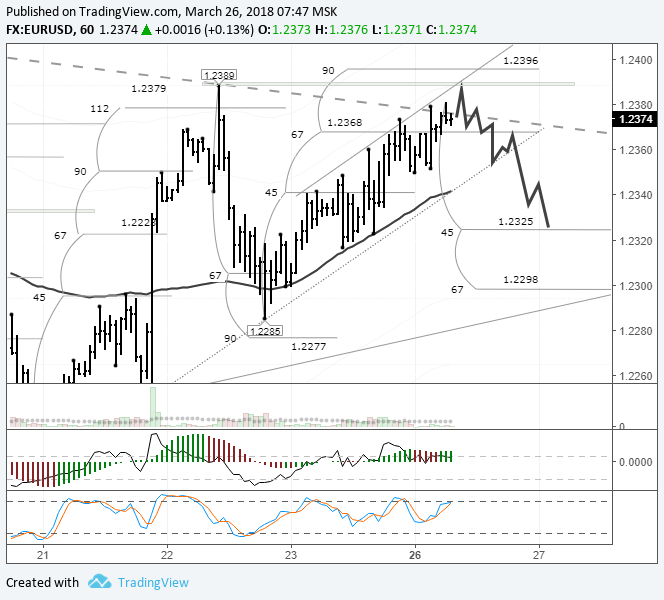Previous:
On Friday the 23rd of March, trading on the euro closed up. The euro rose against the dollar to reach 1.2372. The catalyst for this movement was the greenback’s decline along with a retreat to safe haven assets (gold, yen, franc) on the back of an escalation in rhetoric over trade between the US and China. US10Y bond yields dropped from 2.85% to 2.80%.
US President Donald Trump announced an import duty on up to 50bn USD worth of Chinese products. Investors are expecting retaliatory measures from China on US products.
US data:
Day’s news (GMT+3):

Fig 1. EURUSD hourly chart. Source: TradingView
The euro rose to the 67th degree at 1.2368 as planned, but it didn’t then return to 1.2317 as I was expecting. External factors kept the rate above 1.2350.
In Asia, buyers have renewed Friday’s high, although they fell of short of breaking through the trend line from 1.2556 (16th of Feb). At the time of writing this review, the euro is trading at 1.2379.
For the beginning of the European session, I was expecting quotes to rise to 1.2389, but this isn’t a foregone conclusion. I’m expecting a downwards correction to 45 degrees (1.2325) from a high of 1.2381. The economic calendar is empty. There shouldn’t be too much noise from the statistical side of things today, so I’m expecting to today’s movements go against Friday’s.













Leave A Comment